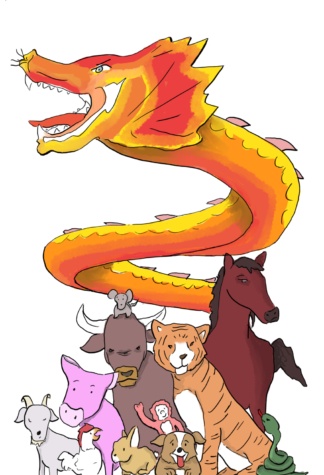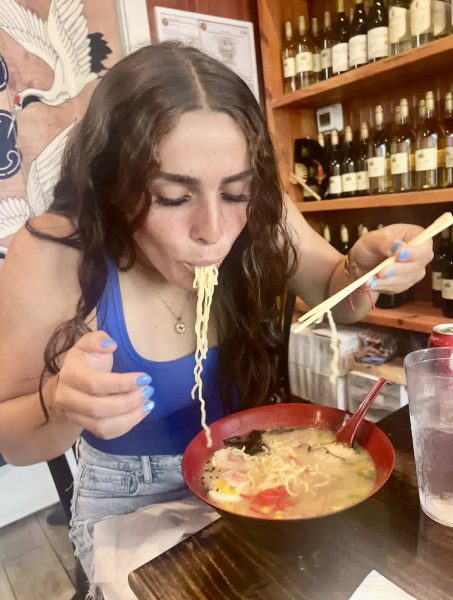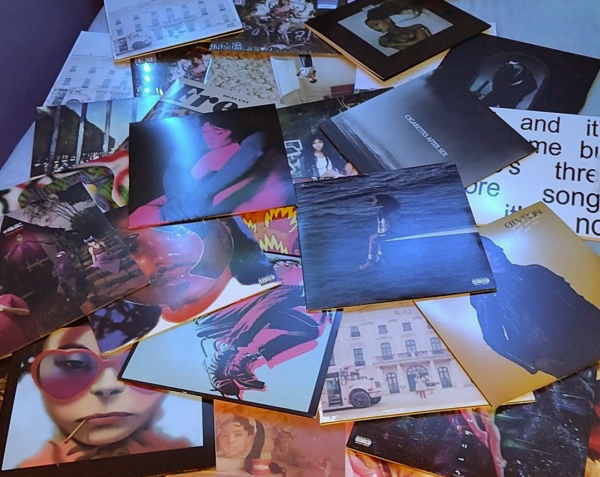Looking for luck
A national holiday all throughout Asia, the Lunar New Year is celebrated to welcome in the new year and bring good fortune

A stream of red and white dances through the cheering crowd, the dragon’s paper-mache skin reflecting the sunlight. Although the crowd’s attention is on the dragon, on the dragon dance that commemorates the Lunar New Year, Chinese teacher Zhenzhen Zhang still beams with happiness, proudly holding the pole that raises and lowers the dragon’s head.
“[Participating in the dragon dance] was pretty cool,” Zhang said.“I can’t believe I didn’t do that in China but now in America, I can’t believe I’m doing all the traditional Chinese stuff.”
Although the Lunar New Year celebration in Florida pales in comparison to those in Zhang’s hometown of Hengshui, China, she still finds ways to celebrate the largest holiday in Chinese culture.
“Growing up, [the Lunar New Year] was the biggest celebration, but over here, it’s not as big,” Zhang said. “And all my family is back in China, and I wanted to share a part of my culture, so I just celebrate Lunar New Year with my students.”
For her Geometry and Chinese classes, Zhang gifted them with a traditional hongbao, or red envelope. Typically, the envelope is filled with money to symbolize luck for the new year, but Zhang gifted her students with a qian, or a coin from ancient China with a square center hole.
“I showed [my students] how to properly receive the envelope, with both hands, and how to say thank you and happy new year in Chinese,” Zhang said.
Beginning on Jan. 22, the Lunar New Year, known as Chunjie in China, Tet in Vietnam, and Seollal in South Korea, is celebrated all throughout Asia to welcome in the new year, and in Asian communities around the U.S. For junior AiLinh Vu, the annual Vietnamese Lunar New Year festival in Orlando reminds her of home.
“Something about [celebrating Lunar New Year] just feels so special,” Vu said. “It’s like this one thing that happens once a year where this huge community gets together and celebrates.”
Vu also planned on going to Phap Vu, a Buddhist temple, with her grandparents, but was unable to do so due to her busy schedule. In past years, Vu would celebrate the new year by lighting incense, praying for good luck and sharing food with her family.
“I think it’s important to celebrate to keep the tradition alive. Otherwise, it’s going to get lost and diluted,” Vu said.
Born and raised in Florida, Vu says there are times where she feels disconnected with her family’s culture. Although she is fluent in Vietnamese, there are times where she does not understand a phrase from her grandmother, igniting fears that she might one day completely lose the language.
“I’m really scared of not being able to pass down my culture, like not knowing enough to be able to pass it down,” Vu said. “I just feel like it’s my responsibility to keep it going.”
Vu’s fears are not uncommon. For junior Nicole Chmilnitzky, daughter to a Ukrainian father and a Chinese mother, her annual tradition of watching CCTV’s Chinese New Year’s gala is a way to reflect on her culture.
“Especially living in a predominantly white town and not being surrounded by the culture all the time, I do feel like I’m losing connection to my culture,” Chmilnitzky said. “Celebrating the Lunar New Year helps me feel tied back to my Chinese culture because I’m able to participate in unique traditions and focus more on the culture than I normally would.”
However, both students find ways to remember their culture, whether through school or annual traditions. Vu, who pursues art as a passion, joined National Art Honor Society and drew chalk art for Lunar New Year, while Chmilnitzky became president of Asian Culture Club. Recently, the club hosted a Lunar New Year potluck, where members brought in traditional foods ranging from nian gao, a Chinese sweet rice cake, to rau cau, a Vietnamese coconut pandan jelly.
“We celebrate Lunar New Year every year in Asian Club because it is one of the biggest celebrations in East Asian countries,” Chmilnitzky said. “Lunar New Year is also a big part of my culture and I wanted to share the fun by having a celebration with the club.”
Both Vu and Chmilnitzky are grateful for Lunar New Year, seeing it as a way to pay homage to their roots.
“I get to see more elders from the community and stuff and talk to them and just get wisdom and insight,” Vu said. “It makes me feel like I’m starting off the new year right because I went back to the roots of my culture.”
Your donation will support the student journalists of Hagerty High School. Your contribution helps us publish six issues of the BluePrint and cover our annual website hosting costs. Thank you so much!






